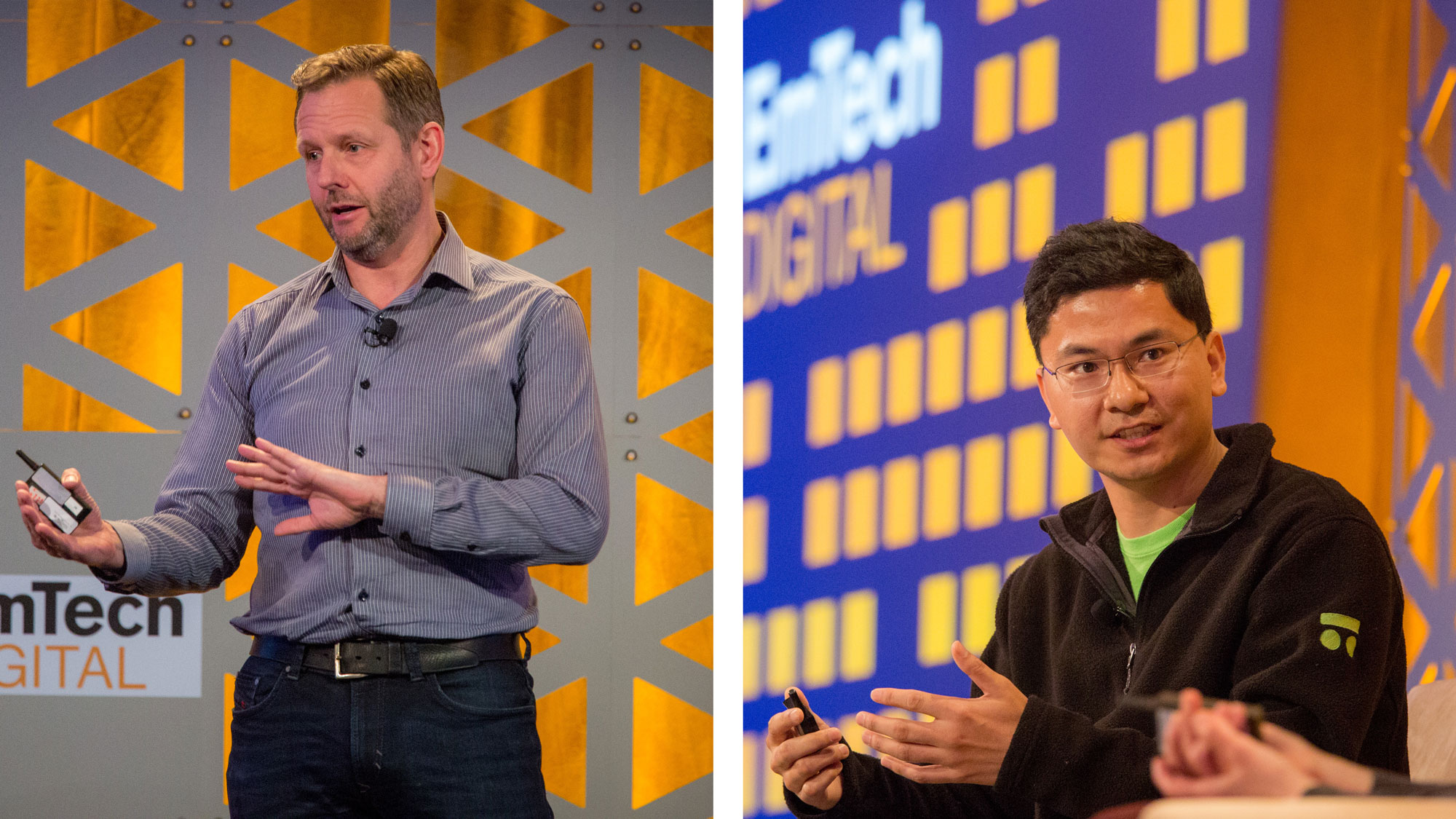A robot’s biggest challenge? Teenage bullies.

Robots are increasingly able to do more things at human-like levels, but we are “so, so far away” from the point where most will have the skills necessary to replace human workers, says Martin Hitch, chief business officer at Bossa Nova. Instead, there are simple, boring tasks that robots can automate.
Hitch, speaking today at MIT Technology Review’s annual EmTech Digital conference in San Francisco, explained how Bossa Nova’s robots went from working in one Walmart location in rural Pennsylvania to roaming the aisles in 50 of the cavernous stores from California to Arkansas. The robots scan the shelves and then send information to the cloud, which gets passed on to the individual store within a few minutes. This includes information about what’s missing on the shelves or any item that might be displaying the incorrect price, saving a sales associate from having to walk around and scan each item manually.
“At the end of the day, we are solving simple problems,” Hitch said.
They might be simple problems, but Bossa Nova has some serious data. To date, the company’s robots have done 6,320 hours of autonomous navigation, traveled 3,600 kilometers, scanned 117,000 aisles, and processed 395,000,000 images.
In the long term, Hitch and Bossa Nova still face challenges—for instance, how to to scale up and how to avoid obstacles, like temporary in-store promotional displays or liquid that’s been spilled on the floor.
There’s also the question of how to ensure that the robots’ interactions with people go smoothly. Hitch says that at first, some store employees are more reluctant than others to accept that the robots don’t pose any physical danger. Eventually, though, human workers warm up to their mechanical coworkers and often give the robots names, like Megan or Eric Jr.
Robots are also learning to solve issues that are less simple, like the last-mile problem. Rui Li, the CEO and cofounder of Robby Technologies, showed off a video of his company’s new Robby 2.0, a cooler-size robot on wheels that can deliver up to “70 liters of booze” (or any other order of that size). The robots say “Excuse me” when blocked by pedestrians, and “Thank you” if the people move. Li says besides making the robots polite, the researchers also trained them to stick to one side of the sidewalk, which helped let humans know how to interact with them.
“This simple change in the behavior of the robot has solved a big problem,” Li said.
Robby 2.0 is also equipped for less friendly human interactions: an alarm goes off if anyone tries to pry open the robot, and a camera can be turned on for remote viewers to see what is going on. While the technology is still developing, Li promises that autonomous vehicles—from Robby 2.0 to drones to cars—will deliver 80 percent of all items in the future.
But the trickiest foe these robots face while out in the world could be the most difficult to predict: teenagers. Hitch says teen shoppers have been known to kick the robots in Walmart, or even slam into them with a shopping cart.
Once robots like Bossa Nova’s and Robby Technologies’ become less of a novelty, that sort of reaction could go away. Until then, Hitch says, there is an easy solution that doesn’t rely on teaching teenagers not to sabotage robots.
“You design for it,” he says.
Deep Dive
Artificial intelligence
Large language models can do jaw-dropping things. But nobody knows exactly why.
And that's a problem. Figuring it out is one of the biggest scientific puzzles of our time and a crucial step towards controlling more powerful future models.
Google DeepMind’s new generative model makes Super Mario–like games from scratch
Genie learns how to control games by watching hours and hours of video. It could help train next-gen robots too.
What’s next for generative video
OpenAI's Sora has raised the bar for AI moviemaking. Here are four things to bear in mind as we wrap our heads around what's coming.
Stay connected
Get the latest updates from
MIT Technology Review
Discover special offers, top stories, upcoming events, and more.